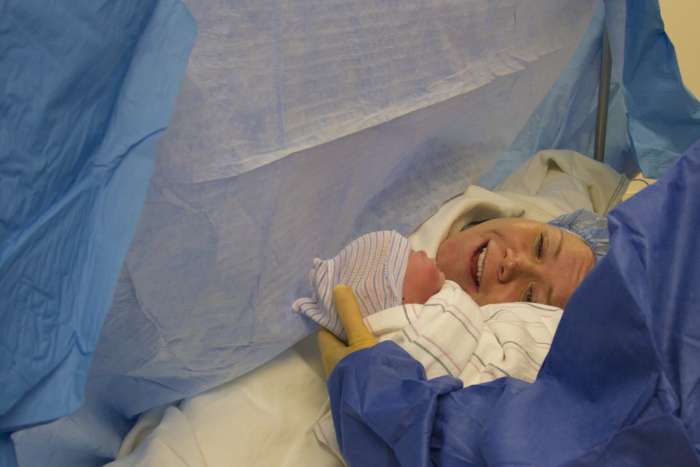Delivery
-
Pregnancy
In the third stage of childbirth, your baby has been born, the umbilical cord is cut, and your uterus contracts again to deliver the placenta. Get more facts on the third stage and how you'll feel.
-
Pregnancy
In the minute after your baby is born, the doctor will assess the baby's breathing, pulse/heart rate, movements, skin color, and responses using the Apgar score. Find out what Apgar number is considered normal.
-
Pregnancy
Studies show there are risks and benefits to continuous electronic fetal monitoring during labor. Learn the pros and cons of nonstop fetal monitoring vs. intermittent monitoring.
-
Pregnancy
In the second stage of labor, the cervix is fully dilated at 10 cm and your baby is far down in the pelvis, ready for birth. Learn about when to actively push, body positions, descent, and crowning.
-
Pregnancy
Episiotomies are less common now than they were decades ago, but they are still necessary in some complicated births. Read about episiotomy, a cut between the vagina and anus to aid in birth.
-
Pregnancy
If you're preparing for a home birth, you and your nurse-midwife have probably made a plan. Learn what to consider for the final preparations for safe labor and delivery of your baby at home.
-
Pregnancy
Your baby's heartbeat and your contractions are monitored during labor to check for progress and to ensure your and your baby's well-being. Get the facts on intermittent monitoring, electronic fetal monitoring, and labor graphs.
-
Pregnancy
How do you know when you've gone into labor and your baby is on the way? Print out this helpful checklist with tips on how you'll know when it's really time!
-
PregnancyBy Breanna Herring, CNM, ARNP, MSN, DNP
Be prepared for sudden birth or precipitous labor with these medical tips for delivering a baby not in a hospital.
-
PregnancyBy Breanna Herring, CNM, ARNP, MSN, DNP
Know the signs of when you're going into labor and the signs that it's time to go to the hospital for labor and birth.
-
Pregnancy
Pain-relief plans may change during labor and childbirth. Hear a woman's story about planning for a natural birth and then deciding to use low-dose anesthesia for her pain: a combined spinal epidural.
-
Pregnancy
It's important to take special care of yourself before labor so that you can keep your energy and strength up for the big event. This checklist will help.
-
PregnancyBy Kristina Cappetta
What are the common physical and emotion signs of labor? And how do you know if your labor really has started...?
-
Pregnancy
General anesthesia, when the mother is asleep, is used in cesarean births and other necessary cases. Find out when and why it's used and what happens to you and your baby during and after the surgery.
-
Pregnancy
A natural home birth using a nurse-midwife is an option for childbirth. Read one woman's story of safely delivering her baby in the comfort of her home without medications.
-
Pregnancy
This is the story of 31-year-old Jenna's natural home birth. She chronicles everything in a detailed timeline from the start of her contractions to the arrival of her brand new baby.
-
Pregnancy
Various types of pain relief medication can help during labor and childbirth. Get the facts about analgesic drugs, which dull the perception of pain; and anesthesia, like epidurals, which numb pain totally.
-
Pregnancy
Labor and birth pain varies among pregnant women and progresses and affects them in different ways. Learn how you might react to pain and can plan ahead to cope using medication or natural methods.
Subscribe to Family Education
Your partner in parenting from baby name inspiration to college planning.
Subscribe




















